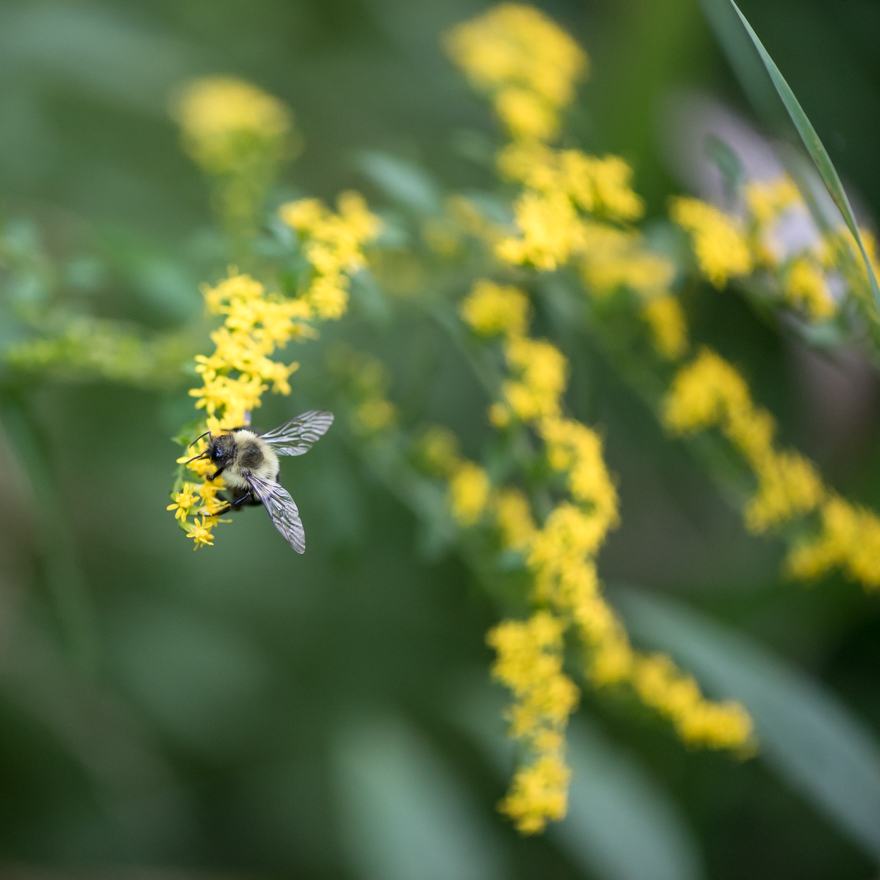
No story — late summer is its own justification.
Tagged: Blue Hills Reservation, bumblebee, Fowl Meadow, Goldenrod

No story — late summer is its own justification.
Tagged: Blue Hills Reservation, bumblebee, Fowl Meadow, Goldenrod
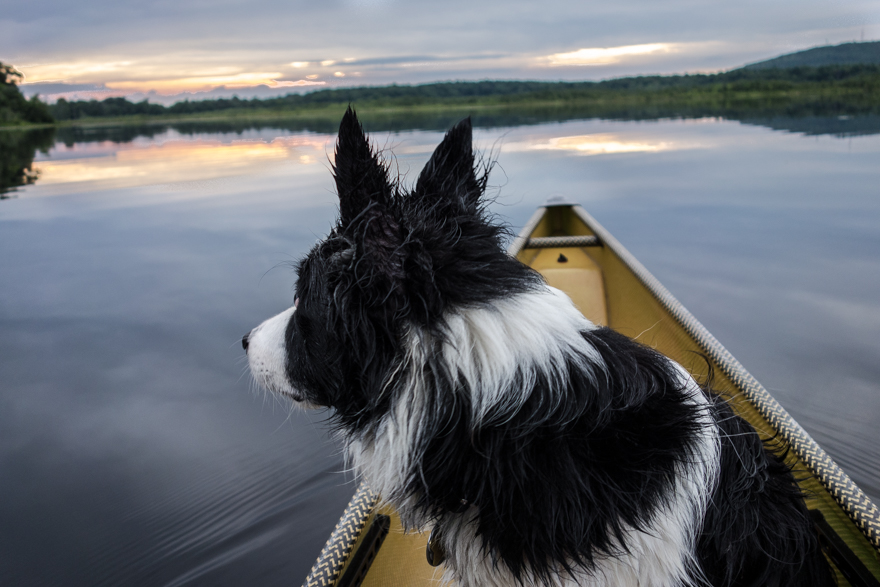
We took a tour of Ponkapoag Pond in the Blue Hills on Saturday evening, just as the sun was starting to set. Luc is a constant threat to launch himself (and us) out of the boat after a goose, duck, turtle, breath of wind, so he rides in the bow where I can better appeal for forbearance. Musti, such shenanigans largely behind him, is happy in the stern, where I’m less likely to drip water on his blanket.
Tagged: Blue Hills Reservation, canoe, Dogs, Luc, Ponkapoag Pond, sunset
Invasive species seem to have (forgive me) invaded the public consciousness lately. Asian carp are poised to invade the Great Lakes, while local officials trumpet their successful battle against the Asian long-horned beetle in Boston. My tendency to skepticism tempers my response to such news, good or bad; I’m reluctant to believe that the sky is falling, and in cases where it really is, I’m dubious that humans can do much about it. I also try to remain open to being wrong, so I was intrigued when my friend Jenn Forman-Orth, an invasive plant ecologist at the Massachusetts Department of Agricultural Resources, invited me to a “biocontrol release” aimed at combatting an invasive plant called mile-a-minute weed. Jenn, along with Ale Echandi of the…
The English language is rich with abstract words to describe visual perception. If I told you to picture a food item, cylindrical in shape, perhaps 6″ long and 3/4″ in diameter, with rounded, slightly puckered ends, and a pinkish hue, you’d likely call up an image of a hot dog. But if instead I wanted to describe a sound, my options would be much more limited. Musicians have a technical language for describing musical sounds, involving pitch, timbre, duration, and harmonic structure, but these terms don’t help much if I want to tell you about Musti’s bark. Birders regularly confront this poverty of language when they talk about avian vocalizations. One solution we employ is “transliteration,” where birdsong is interpreted as human language, resulting…
This is a blue-gray gnatcatcher. And here’s a recording of his call notes: There’s a robin singing in the background; the gnatcatcher’s vocalizations are the worried-sounding scolds. So he’s not the fanciest or most attention-getting bird around. He weighs around 6 grams, hangs out in treetops, moving constantly, and can’t sing worth a damn (from a biased, robin-centric standpoint), but he’s actually a fairly common bird. Once you tune in to his vocalizations, you start to notice gnatcatchers all around, especially in wet woods. Since this spring’s migration started in earnest a couple of weeks ago, I scarcely remember a walk we’ve taken when I haven’t heard at least one gnatcatcher. The problem is that, until recently, I had no…
Tagged: bird, Blue Hills Reservation, Blue-gray gnatcatcher, breeding, Fowl Meadow, lichen, nest, spring
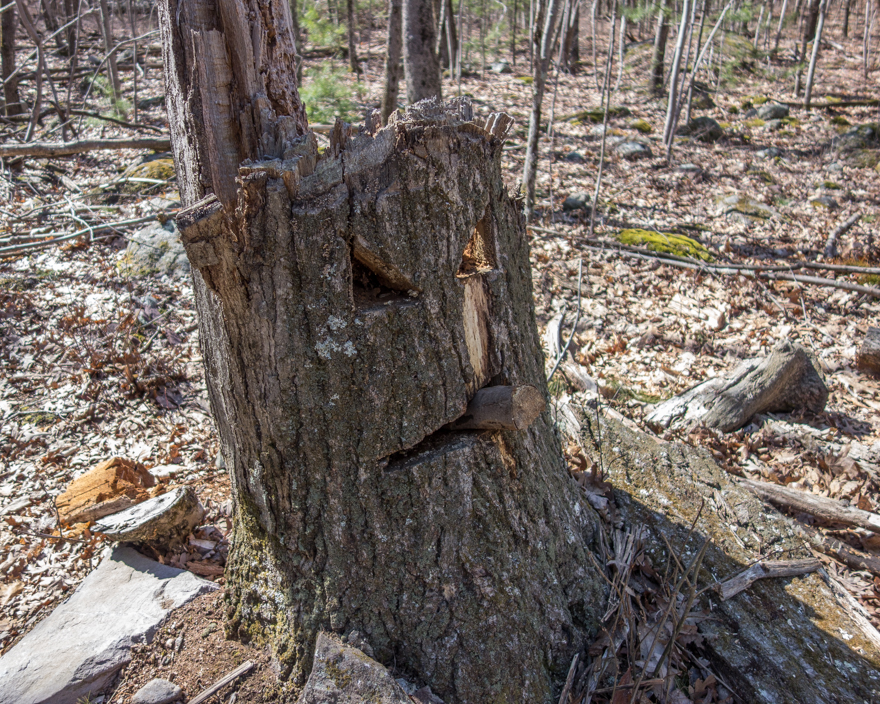
Encountered in the Blue Hills Reservation on the Three Pines path northeast of Ponkapoag Pond.
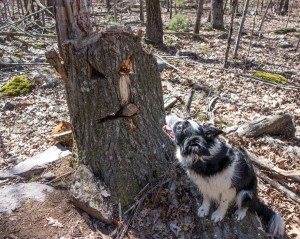
Tagged: Blue Hills Reservation, carving, chainsaw art, H.L. Mencken, sculpture, stump, tree
Last night, Musti, Luc, and I set out to find wood frog eggs. We headed for the little pond south of Chickatawbut Hill where we’d encountered enormous numbers of wood frogs two weeks earlier. The only catch was that I’d never seen a frog egg before. Friends of mine, hearing about my interest in the frogs told me, “You’ve gotta check out the egg masses! They’re really cool looking, and there should be tons of them in that pond. You can’t miss them!” So armed with this encouragement (and a few minutes with Google Images), we went looking. It’s a funny thing looking for something that should be present, yet not really knowing what you’re looking for. Am I not finding it because…
Tagged: amphibians, Blue Hills Reservation, Chickatawbut, frog eggs, spring, Wood frog
A Finnish friend of mine asserts that black trumpet mushrooms (Craterellus cornucopioides, fantastically delicious) are a social construct. That is, you can only find them in the woods if you believe that they will be there, and further, that the number of mushrooms you find is directly proportional to the strength of your belief. In this way, finding a first black trumpet boosts your conviction and leads to others. In the best case, this becomes a positive feedback loop, and you come home weighed down with mushrooms. My friend would further claim that black trumpets only exist insofar as we believe in their existence, but then, Nordic darkness does funny things to the Finnish psyche…

Finnish metaphysics notwithstanding, I’ve found this approach to the natural world to be extremely revealing. I’m chastened by my ability to walk through a space and fail to notice something (many things!) until a more alert friend points it out to me. Then the thing — bird, flower, geologic formation — afterwards appears everywhere, and I wonder at my previous blindness. There’s a wonderful creature called a snow flea (most likely Hypogastrura tooliki) that epitomizes this phenomenon for me. They are most easily observed on warmish days toward the end of winter, when they congregate on the snow, often in animal tracks, looking for all the world like soot, or a dusting of black pepper.
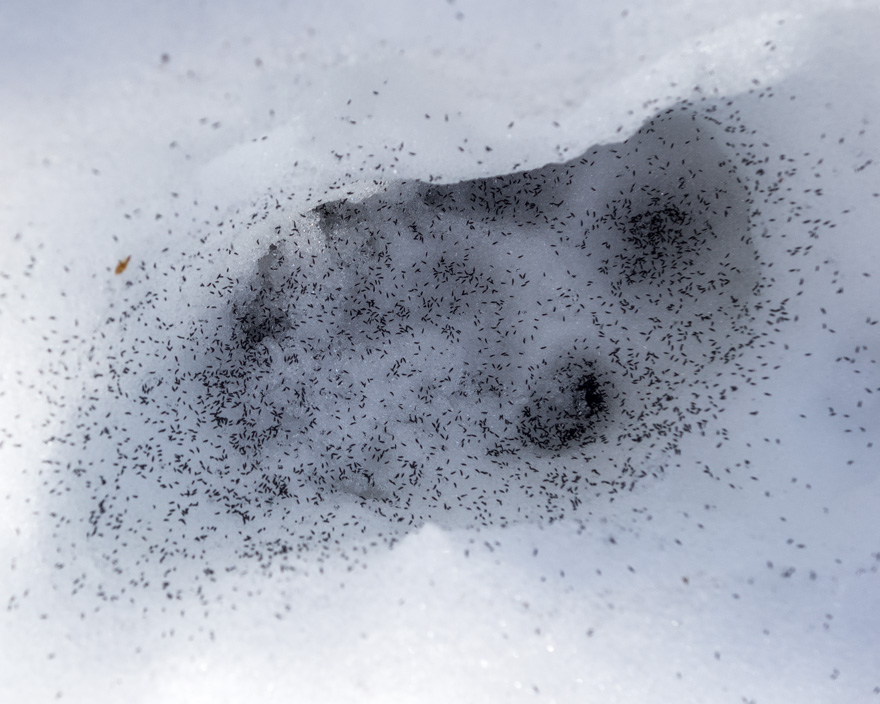
It’s supremely easy not to notice them at all, and even if you do, to dismiss them as a byproduct of the nearby interstate highway. But if something makes you pause to watch them for a moment, everything changes:
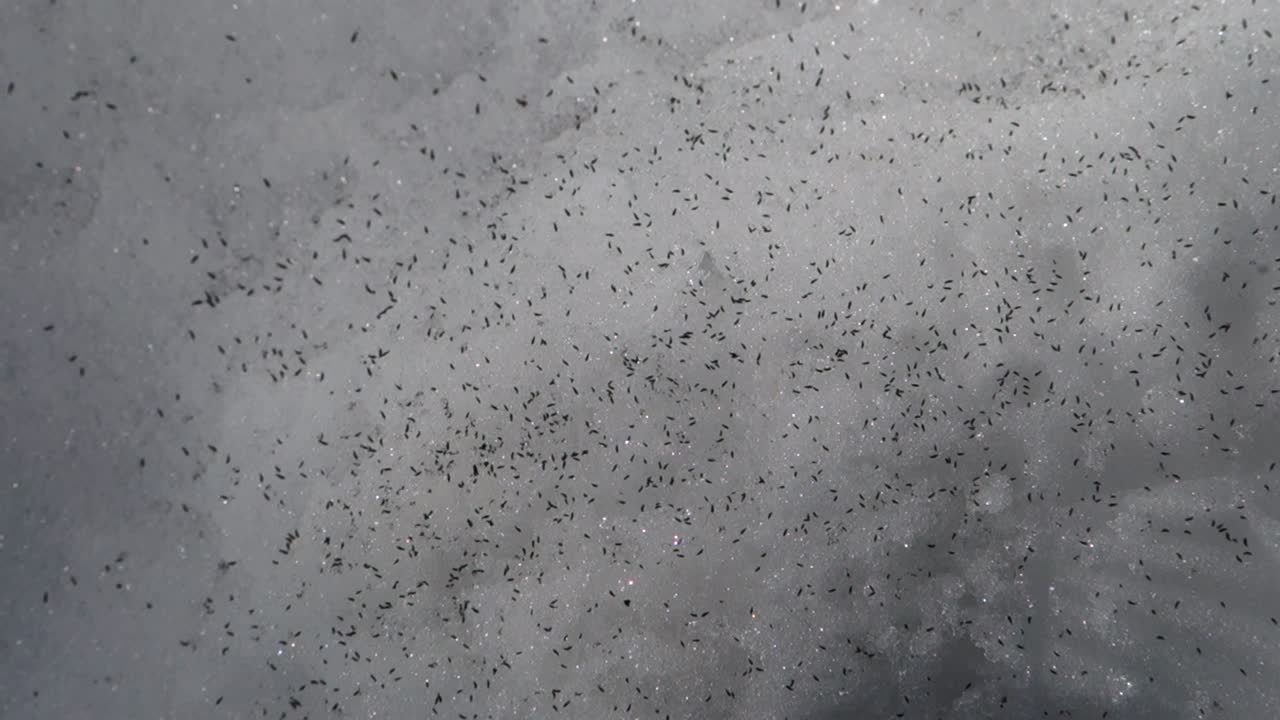
Suddenly dirt becomes life, and you wonder, “Where the hell did these guys come from? And why aren’t they frozen?” It turns out that these guys are neither fleas nor insects, but springtails from the order Collembola. They are incredibly abundant, though hard to spot, in forest soils, eating dead plant matter and other small critters and generally helping further the decay cycle. They have evolved to biosynthesize what amounts to antifreeze, which allows them to remain active in cold weather, but I’ve not heard any convincing explanations of why they gather on top of the snow in late winter.
I have a developed a great fondness for these unlikely little creatures that share the winter landscape with me. They’ve gone from invisible to blazingly obvious since a friend pointed them out to me, and I can’t help smiling as we encounter them on our winter runs. And that would have been the end of my story, but for my discovery last weekend (with Musti for scale):
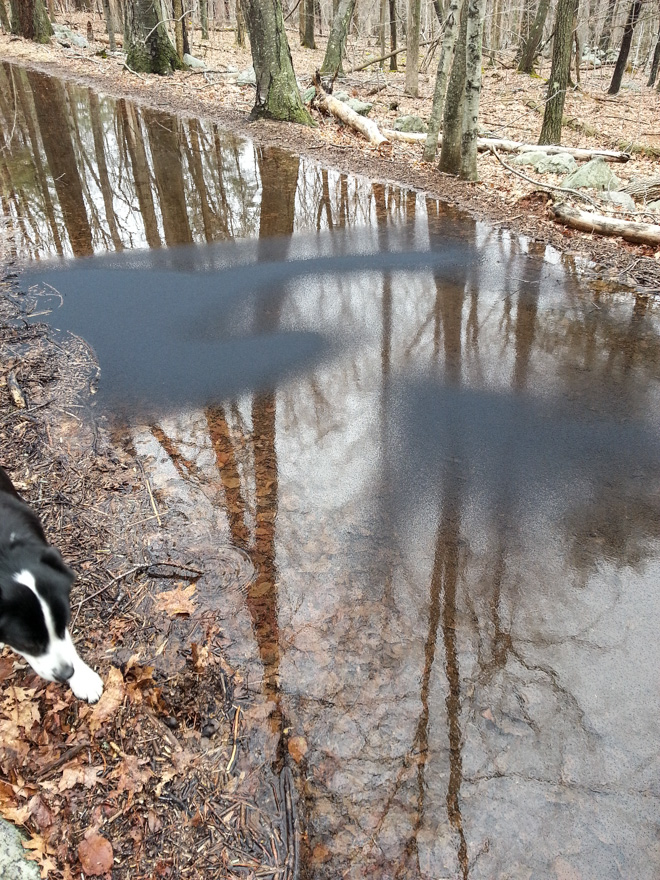
We were near the end of a run in the Chickatawbut section of the Blue Hills when I saw a flooded section of the trail ahead of me. At first I thought there were strange wind-driven ripples on the surface of the water, but as I got closer, it was clear there was something other than water on the surface. I dipped my fingers in to try to figure it out:
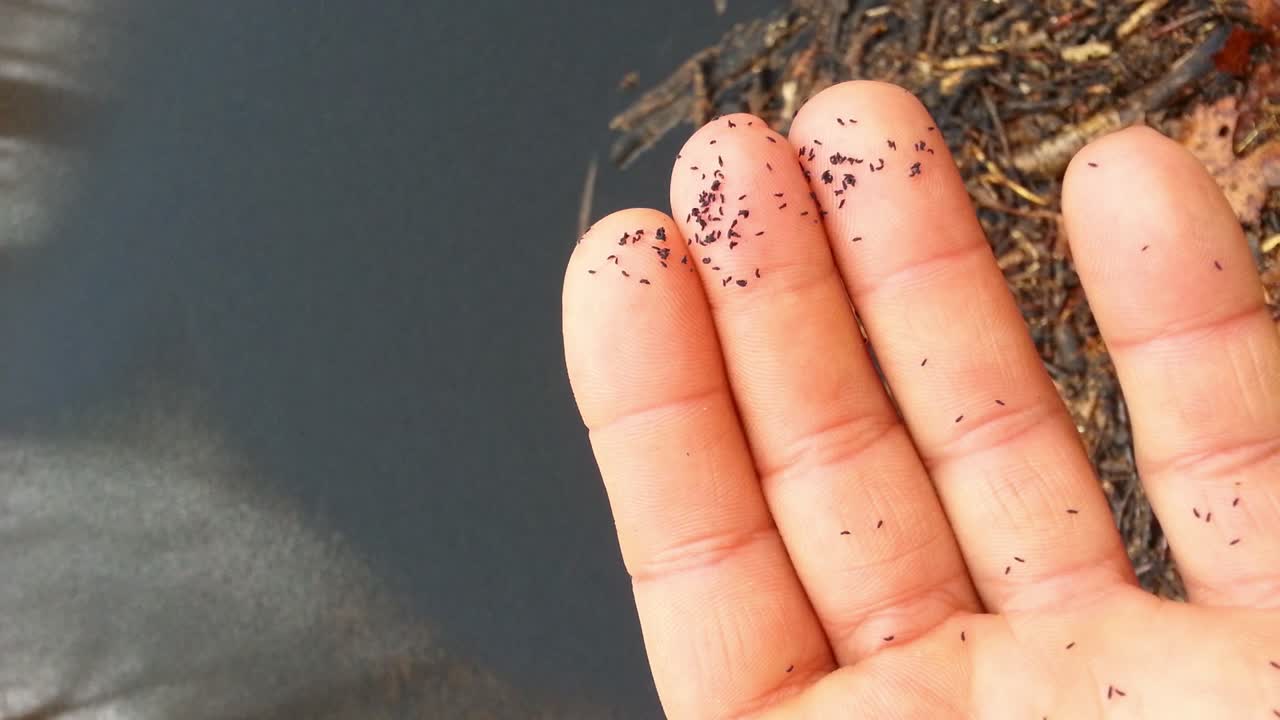
My winter friends had come back to visit me! I explored the area further, and found that the snow fleas were everywhere on the gently flowing water on the trail.
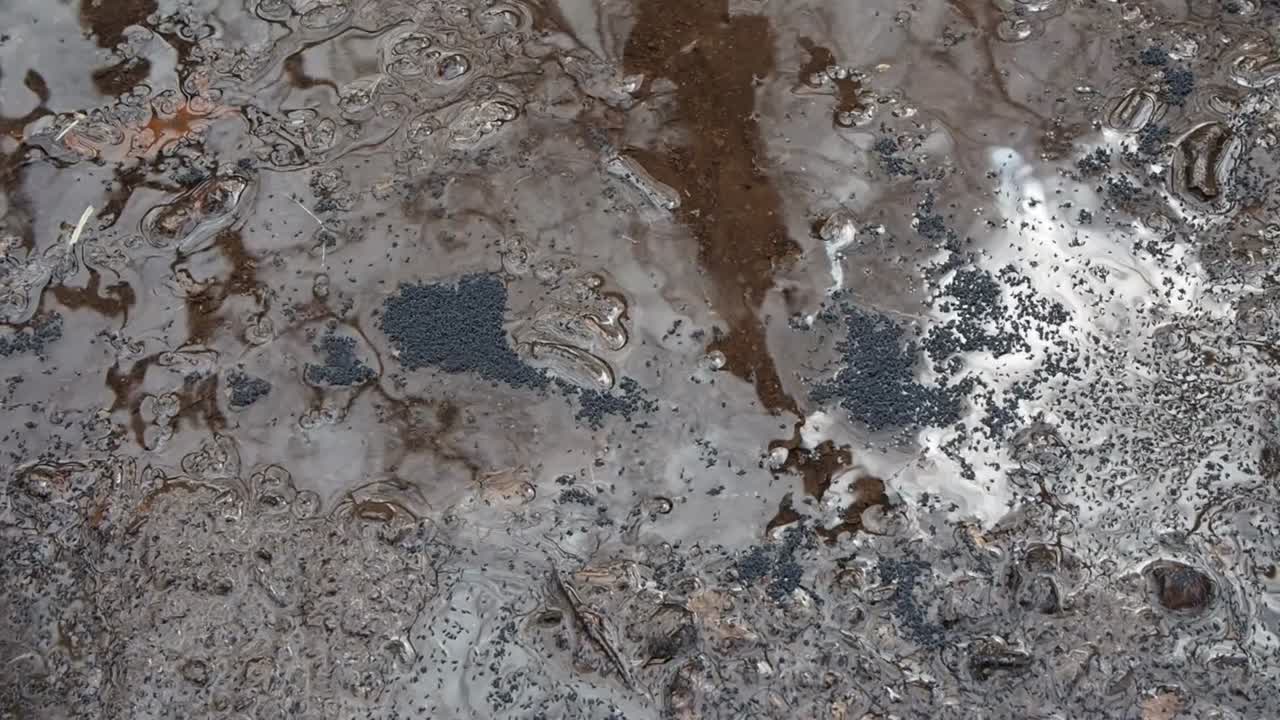
Still, the appearance felt somewhat parenthetical — it didn’t seem that the puddle-borne snow fleas were any more representative of normal springtail behavior and habitat than the ones filling snowy footprints.
Later that afternoon, I went back to the same section of woods, this time in search of wood frogs. I was sitting on a chunk of granite next to a vernal pool, waiting for the frogs to overcome their shyness, and I noticed something on my pant leg:
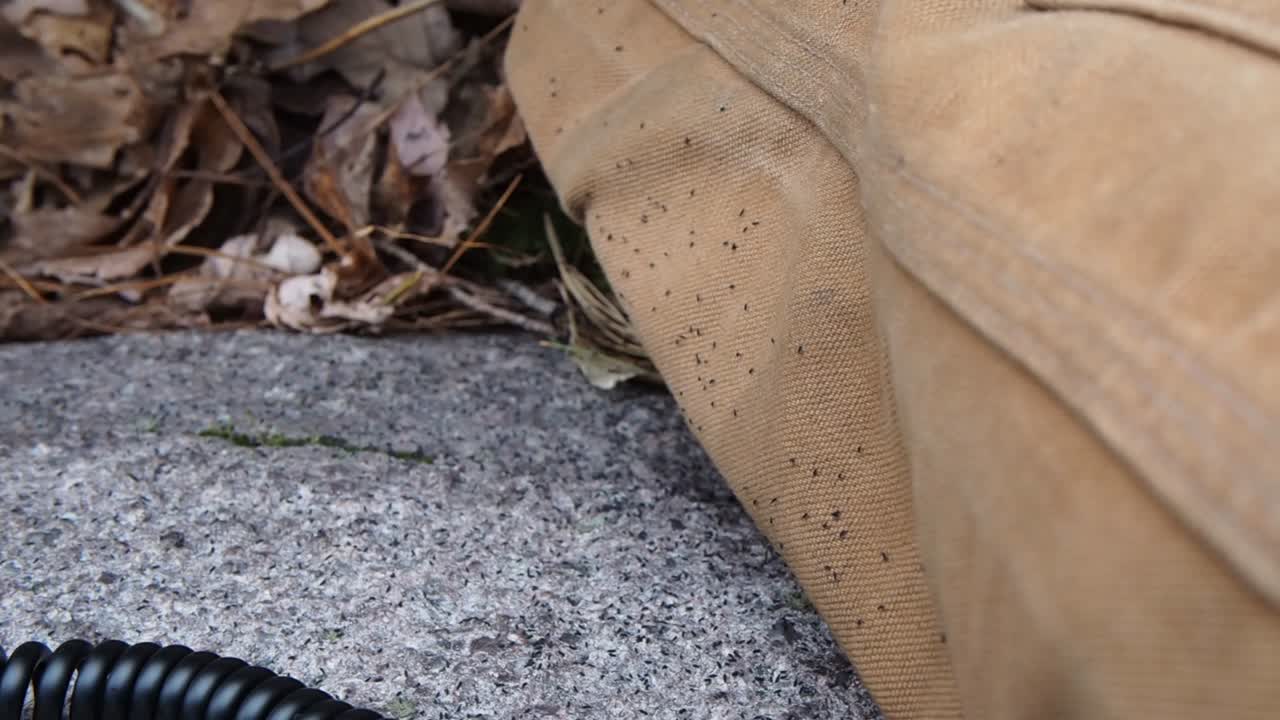
Now we were getting somewhere! For the first time, I was seeing my friends in what might be their normal state, hopping around on a rock and in the leaf litter (and the wood frogs were finally starting to vocalize). Each encounter with the snow fleas left me more open to the subsequent one, until I got a glimpse into their previously-invisible world. I don’t think I can be persuaded that I had any role in their appearance, but belief and expectation played a large role in my learning more of their story.
Finally, I found this wonderful video online that gives an alternate explanation for the existence of snow fleas…
Some years ago while we were walking in the woods, I heard quacking coming from a small pond a little way off the trail. Mallards, I though, and brought my binoculars up to take a look. I couldn’t find them, even though mallards are not known for cryptic coloring or a retiring manner. A few days later, the same thing happened in a different spot — phantom mallards. I was starting to get confused; I know my eyesight is not the best, but I can usually rely on my ears to tell me what’s going on around me, and my ears were leading me to invisible ducks. Eventually my friend Andrew enlightened me. Turns out there’s a creature called a wood frog…
Tagged: Blue Hills Reservation, ducks, Mallard, sound recording, vernal pool, Wood frog